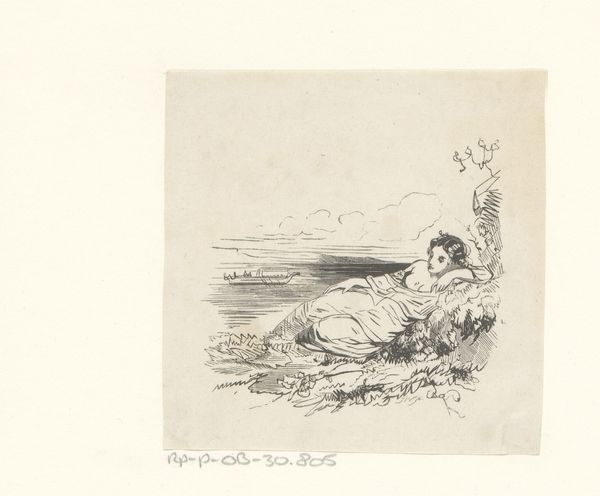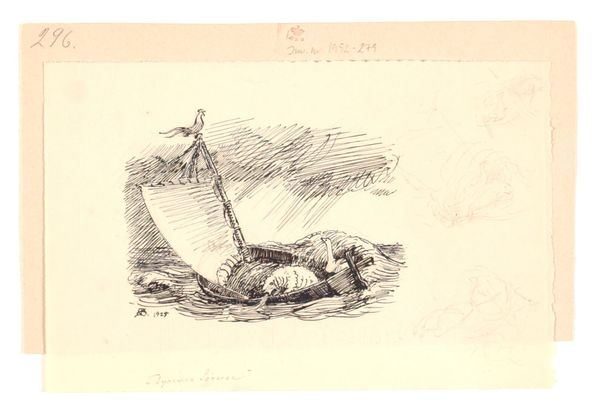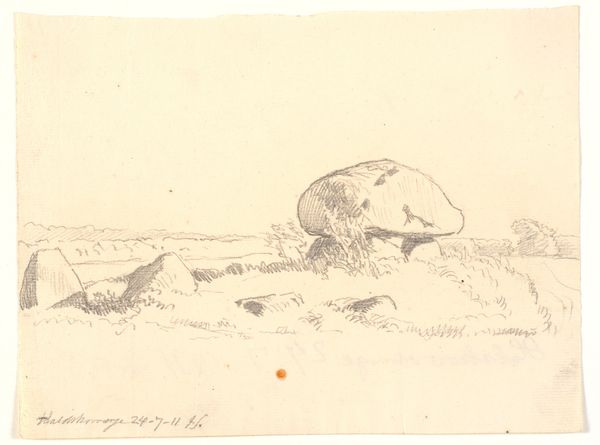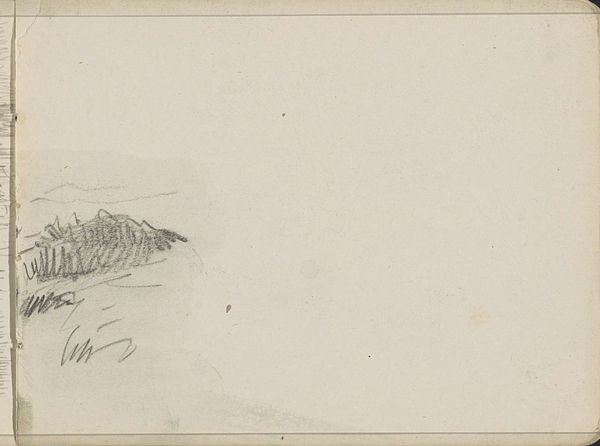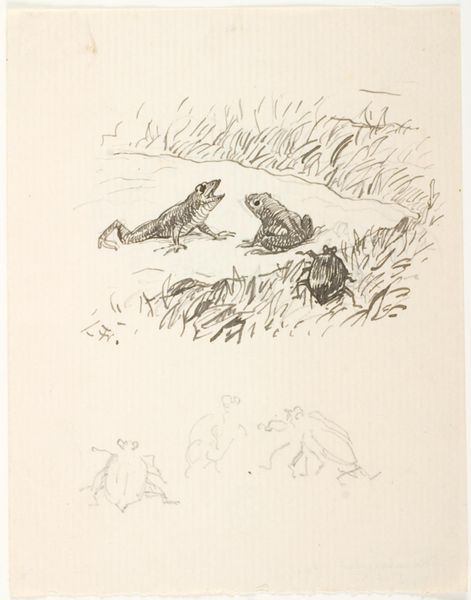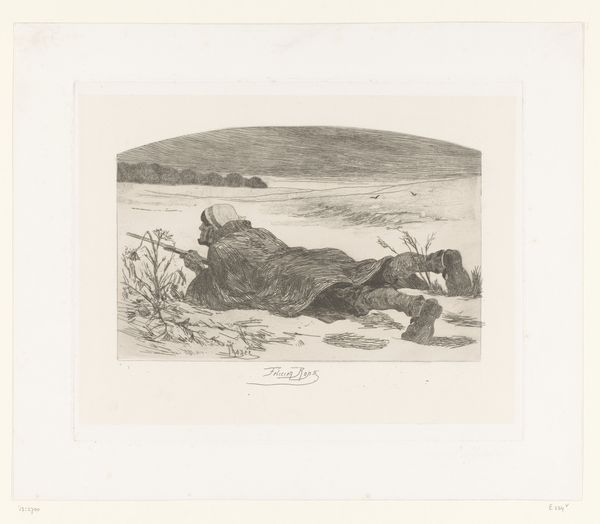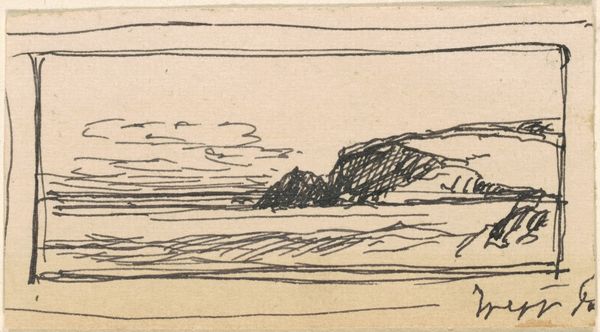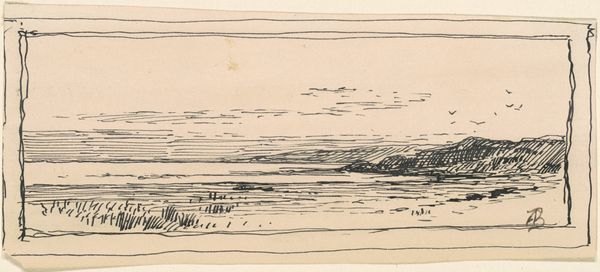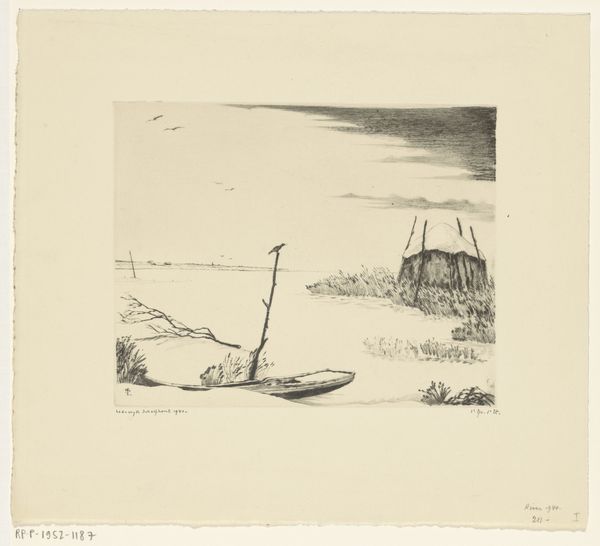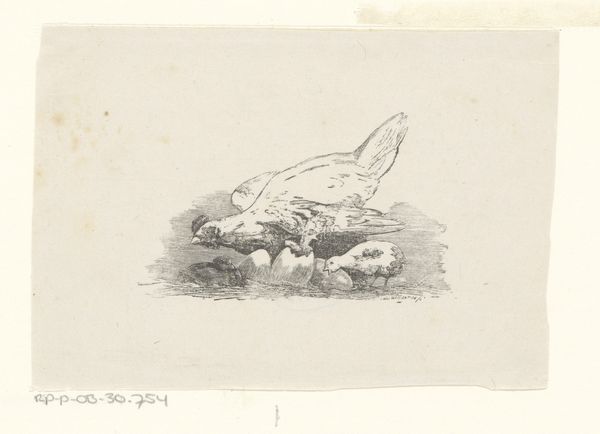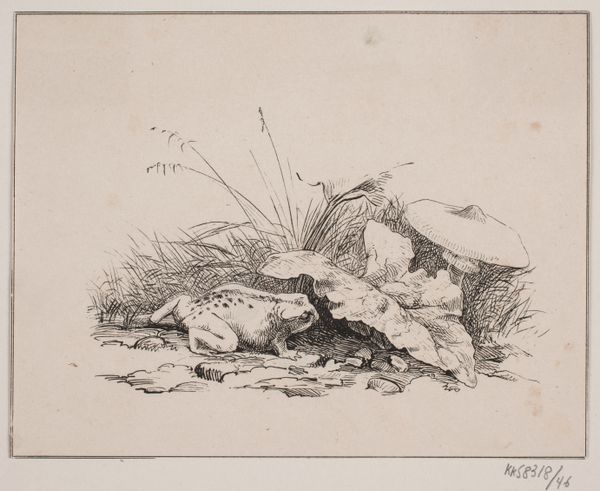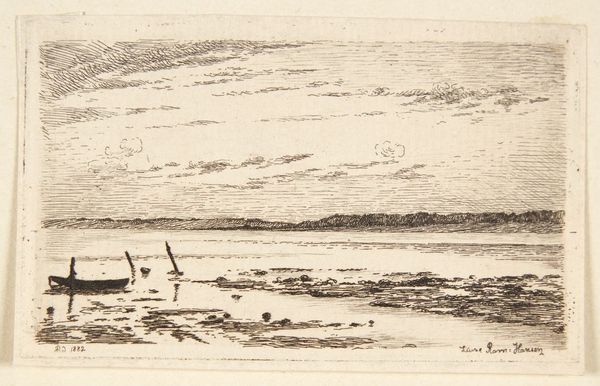
Dimensions: 170 mm (height) x 225 mm (width) (bladmaal)
Curator: This is Niels Skovgaard’s illustration for “Sandflugten ved Tisvilde,” created in 1917. It’s an ink drawing currently held at the SMK. Editor: My first thought is how exposed the figure feels. Isolated, almost abandoned, yet also perfectly composed within this sparse landscape. Curator: Absolutely. It’s interesting to consider this work in relation to the context of its creation. Skovgaard was illustrating a story about the encroaching sand dunes, a constant threat altering the livelihoods of people on the coast. The mermaid could then be viewed as representing this constant threat or as the figure symbolizing resilience of people facing harsh conditions. Editor: And look at the formal elements he uses to achieve this effect. The limited palette forces you to concentrate on line and form. See how the meticulous rendering of the mermaid’s tail contrasts with the more suggestive sketch of the surrounding landscape? It emphasizes her "otherness", doesn’t it? Curator: Yes, and the technique, simple as it might seem, speaks volumes. The ink, readily available and affordable, underscores that illustrations and similar works were accessible forms of art, made for wide dissemination. Editor: The materiality contributes to a narrative of everyday life, versus grand artistic ambitions. However, he's still employing quite traditional art themes, as there is a very deliberate staging here; how the mermaid, positioned low in the frame, directs our gaze towards the horizon. Curator: I agree; though rooted in folklore, mermaids came to symbolize nature's unpredictable nature and romantic ideals of escapism during this period. The "narrative art" tag the museum gives is definitely fitting because of these stories people are bringing to the work. Editor: Thinking about the form, you’re right—the drawing uses the mythology of mermaids as a very potent symbol. Even if it wasn’t illustrating anything else. Curator: In conclusion, Skovgaard’s drawing merges accessible artistic creation with traditional storytelling. The illustration is as much about labor and materiality as it is about skillful rendering of the form, as one of many romantic responses to nature’s powers. Editor: I think it's a simple, striking piece where the starkness reflects a particular feeling in Danish Romanticism that is present, but a bit distinct to much of the romantic expression happening on the continent at that time.
Comments
No comments
Be the first to comment and join the conversation on the ultimate creative platform.
